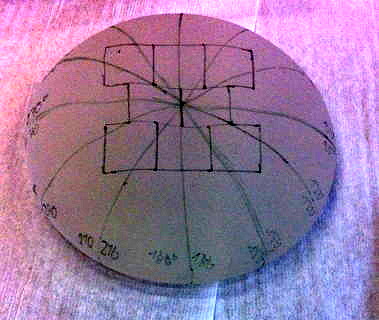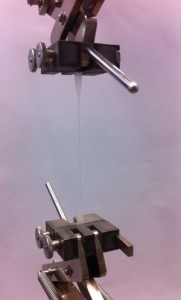Tensile tests for breast implants

FAU researchers look for the best silicon for breast implants
Millions of women worldwide have silicon implants to enlarge their breasts or as part of reconstructive surgery after breast cancer. This procedure is not without risk – a fact which was highlighted by the scandal surrounding the French company Poly Implants Prothèse (PIP). The silicon which the company used in its implants had not been approved for medical devices and was in fact a much cheaper form of industrial silicon. The disastrous consequence of this was that many of the implants ruptured. The scandal two years ago prompted researchers at FAU to investigate the silicon used in breast implants. The EU Commission has recently recommended a procedure which is used to compare the quality of implants that was developed by a team of researchers led by Prof. Dr. Dirk W. Schubert at the Institute of Polymer Materials in Erlangen.

‘Breast implants were already being tested before the PIP scandal, although not as thoroughly as rubber seals for cars,’ says Prof. Dr. Schubert, who is part of a team of experts which advises the EU Commission about breast implants. While the failure of the PIP implants sparked a Europe-wide discussion about better requirements regarding quality and monitoring, it also prompted more research into silicon implants. Two years ago, the FAU researchers began carrying out tensile tests to assess the tear-resistance of the shells of implants made by PIP and other manufacturers.
To enable them to evaluate the entire implant, they took at least 100 samples from each implant which was tested. Their findings show that the samples for the tensile test should be taken in a very particular way. The implant shell is cut from top to bottom into twelve segments, like an orange. Samples are then cut from these pieces. The direction in which they are cut is a key factor. Implant shells usually rupture along the flat side of the breast implant, so the researchers cut the samples perpendicular to the direction of potential ruptures. Their results showed that silicon implants are not equally tear-resistant all over and that not all implants are the same. The implants with rough surfaces ruptured much more frequently than those with smoother surfaces.
When the values are plotted on a new type of map which was developed by Schubert, they are concentrated in three different regions, known as product clusters. This new method of mapping tear-resistance makes it possible to make a distinction between silicon breast implants which are at high risk of rupturing and those where the risk is low. ‘No implant lasts forever. This makes it all the more important that we expand our knowledge of factors which have an effect on implant failure,’ Prof. Dr. Schubert explains. Other studies which are currently being carried out at the Institute are building on these findings. FAU researchers are currently investigating the shell material by creating different surface structures themselves and testing their tear-resistance. The materials science experts hope that this will enable them to find out which kind of silicon is most suitable for use in breast implants.
Further information:
Prof. Dr. Dirk W. Schubert
Phone.: +49 9131 8527752
dirk.schubert@ww.uni-erlangen.de